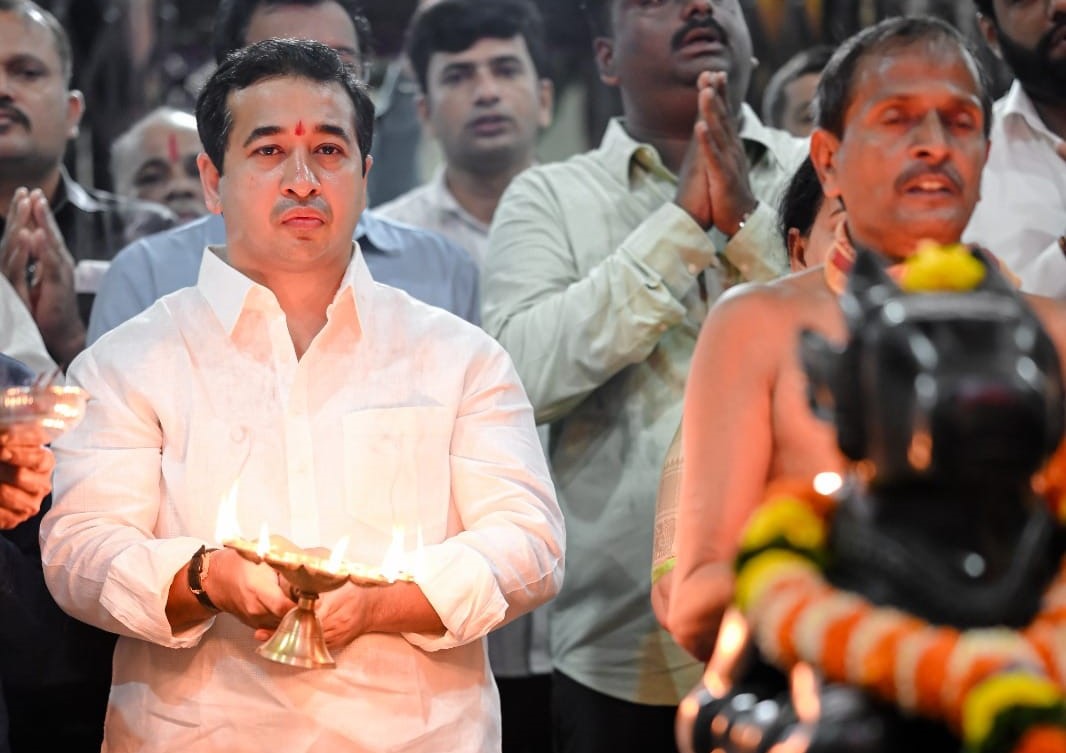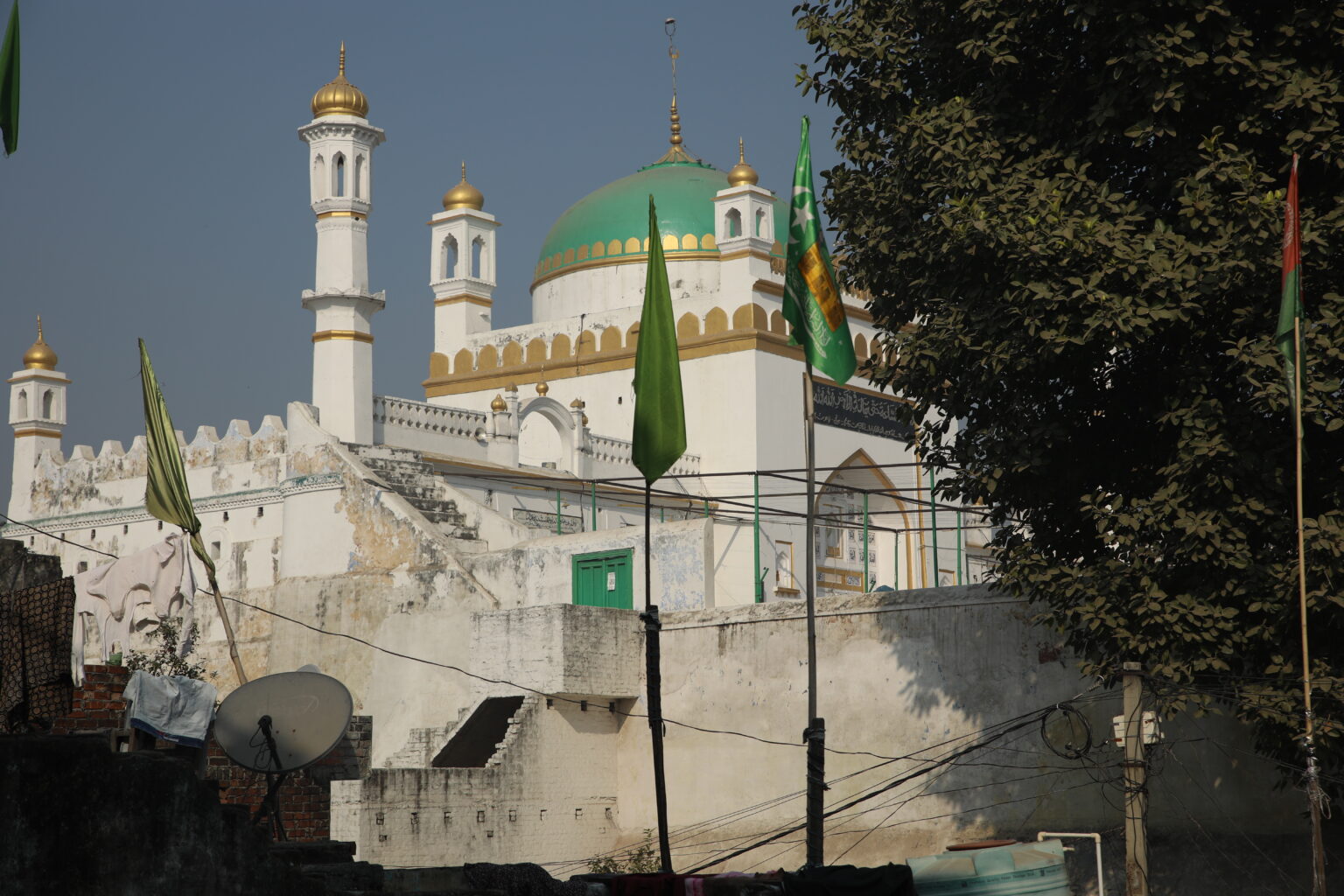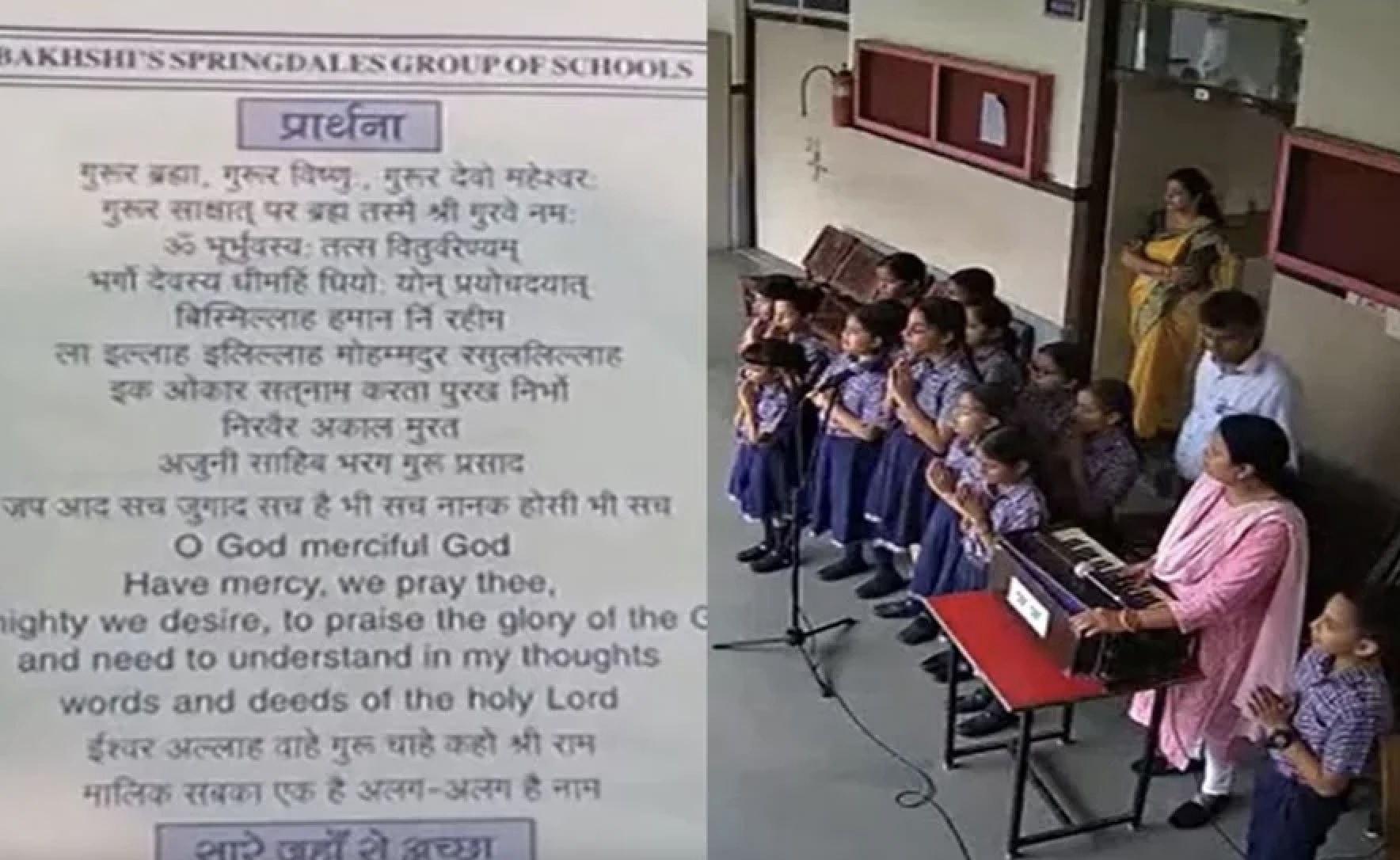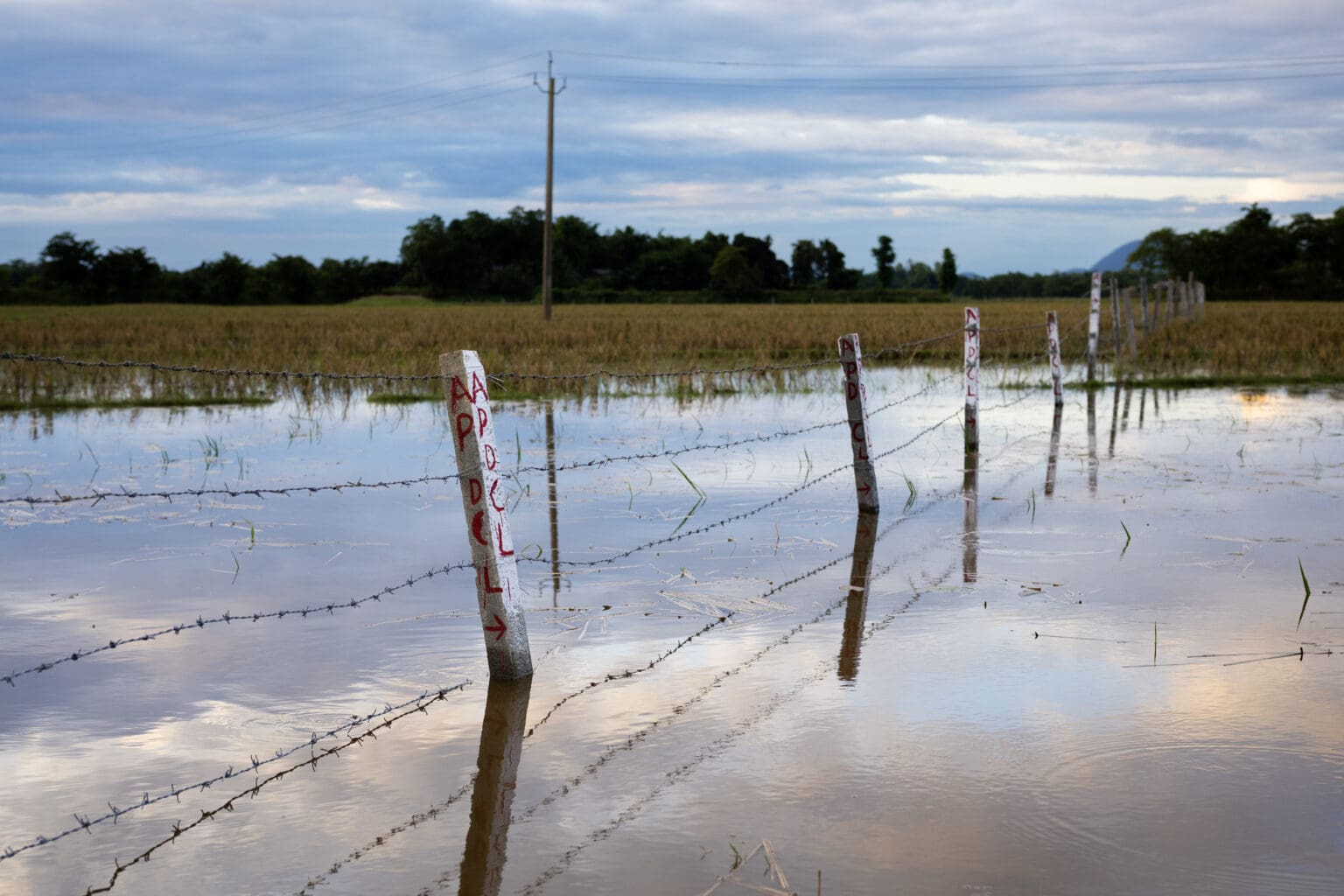
https://www.news9live.com/state/karnataka/how-the-hijab-row-threatens-to-polarise-schools-in-karnataka-151477
In India today, the world view of our society is tainted with the virus of hate, distorting everything that is not Hindu. All spaces of everyday life have been turned into crucibles of anti-Muslim bigotry and we are undergoing mass radicalisation on an unprecedented degree. Organisations entrenched in the Hindu ecosystem have hijacked every realm from private spaces to all organs of the State. In this context, education has been an important project for the right-wing. The Sangh Parivar and its affiliates like Vidya Bharati, Akhila Bharathiya Vidhyarti Parishad and Bajrang Dal have long identified the education system as a potent instrument for social engineering and undertaken expansive drives across the country for its “Indianisation, nationalisation and spiritualisation”.
From being a part of writing curriculums and training teachers in states like Madhya Pradesh and Rajasthan to having RSS ideologues like Dinanath Batra influence important policy decisions in the education sector, the Sangh Parivar has enjoyed a commanding presence in the arena. In Karnataka too, Hindutva intervention in education has been forceful and consistent from their involvement in rewriting textbooks to align with Hindutva ideology to policing inter-faith student interactions to pushing for a ‘satvik diet’ in mid-day meals.
Significantly, the role of Hindutva in shifting the landscape of education in India has been long, slow and mostly invisible, although it has been highly effective. The stealthy nature of such transformation is what makes it dangerous and insidious besides making it doubly harder to undo. When these long-standing efforts by majoritarian communal forces bear fruit, they manifest in the form of young, Hindu, college going men becoming hardened by hate and putting Muslim women on virtual auctions or in instances such as the institutional discrimination and exclusion of hijab-clad Muslim students in Udupi, Kundapur, Shivamogga and Chikkamagaluru, or in the harassment of minority institutions for carrying out ‘forced conversions’. The deep-seated impact of the work of majoritarian organisations is discernible when educational spaces can unquestioningly be used in this manner to funnel hatred into mainstream society.
The muted response of the State Government to the blatant intimidation of students demonstrates their connivance in building an educational system that is meant to sustain social/religious apartheid. Parallels may be drawn to the federal policies in the US furthering segregation and the systemic manner in which the South African government enforced racial apartheid and used education as a tool to impress elements of white South Africans’ supposed superiority. Similarly, the hijacking of educational institutions to operationalise a project of social apartheid is mounted on the notion of Hindu superiority with a two-fold agenda: one, to completely delegitimise Muslims/other minorities as rightful citizens of the society. Two, to convince the Hindu youth (who in many cases are themselves from oppressed communities)of the legitimacy of Hindu supremacy and turn them into foot soldiers of the grand mission of establishing a Hindu Rashtra.
Although the State of Karnataka is in the ninth position nationally insofar as education is concerned, crucial statistics on the educational indicators have been hard to come by post-COVID with lockdowns, school closures in the state. Despite its existing status as a literate state, under the current administration, cases of communal divide, anti-minority hate have made their way into educational institutions in the region, poisoning the minds of the next generation. According to a survey done by the Sarva Shiksha Abhiyan in the last decade, Muslim students reportedly have a large dropout rate in the state. On average, 50,000 students from the community drop out of school each year, a majority of them at the high school level. Access to educational spaces for the 12% Muslim population in the state has been challenging due to the socio-economic disparity faced by the community. In addition to this, the changing attitude of educational institutions towards minority students has further alienated the student population from the community.
Amid these dangerous developments, the students from the minority community face an uncertain future that threatens to affect the trajectory of their education. Female students are in a particularly vulnerable position as a consequence of such indoctrination for they stand to lose opportunities to secure their education and future career aspirations. In Kundapur, for example, vigilante groups were seen surveilling educational institutions where hijab-clad women students were denied entry into classrooms, letting out menacing cries of “Jai Shree Ram”. Worryingly, this means that women students are not only faced with the predicament of choosing between their faith and education but are also compelled to deal with the conundrum of having to choose between their personal safety and their education.
At the time of framing of the Constitution, education was seen as a means to social justice and equality. It was a tool to overcome social disabilities and design an egalitarian and non-discriminatory society. Nonetheless, it is alarming that education under the Sangh is acting antithetical to this constitutional vision. State-run institutions are openly contemptuous of the Constitution and have betrayed their fundamental commitment to it. Dr. Ambedkar argued that we must make equality, liberty and fraternity a way of life if our democracy was to be strengthened. Denial of liberty, he said, is to perpetuate slavery. It means a state of society in which some men are forced to accept from others the purposes which control their conduct.
Of fraternity, he wrote, ‘An ideal society should be mobile [..] there should be many interests consciously communicated and shared. There should be varied and free points of contact with other modes of association. In other words, there must be social endosmosis. This is fraternity, which is only another name for democracy. Democracy is not merely a form of government. It is primarily a mode of associated living, of conjoint communicated experience. It is essentially an attitude of respect and reverence towards fellow men.’
Repeated ostracisation of Muslims from the classroom is part of the community’s systemic destruction from public imagination and is wholly violative of our democratic ethos. It severely curtails the community’s democratic right to public participation. Besides, it also violates multiple constitutional guarantees such as the right to equal citizenship, the right to dignity, the right to education, the right to liberty, the right to religious freedom and the right to equal opportunities and turns members of the Muslim community into sub-humans who are ineligible for recognition as citizens. The question thus arises, how did minority religious practices and personal preferences in the daily lives of people increasingly become a tipping point for a societal divide? This systematic erosion of harmony, understanding, and inclusivity is increasingly becoming more evident with the “us” versus “them” or “we” and “they” narrative.
How do we respond to such violence? Firstly, we must absorb lessons from history and the stories of resistance. Our own experience with the brutality of the Partition has armed us with tools to fight communal bigotry. There is merit in harkening back to these learnings. Secondly, building solidarities across causes and communities will form the fulcrum of the resistance against Hindu majoritarianism. Lastly, as disillusioning as the judiciary may be, it still functions as a flickering ray of hope in holding the hate offenders accountable. Communities across the state have displayed the merits of fighting legal battles under a united front with the single-minded aim of holding the perpetrators of hate speech, violence, and communal provocation accountable before the law. It is incumbent that educators take a leading role to sensitize students about cultural, religious differences and appeal to their growing sensibilities concerning the merits of living in a land as diverse as India.
Ideally, educational spaces are where the ideas of acceptance, democratic values and critical consciousness of the world must take shape in the minds of the young. Instead, they have turned into industries of visceral hate. Allowing the prevalence of such a climate is not only detrimental to the future of students who are unsuspecting pawns of vicious Hindutva politics but will also spell the death knell to Karnataka’s syncretic culture.
This story first appeared on news9live.com






